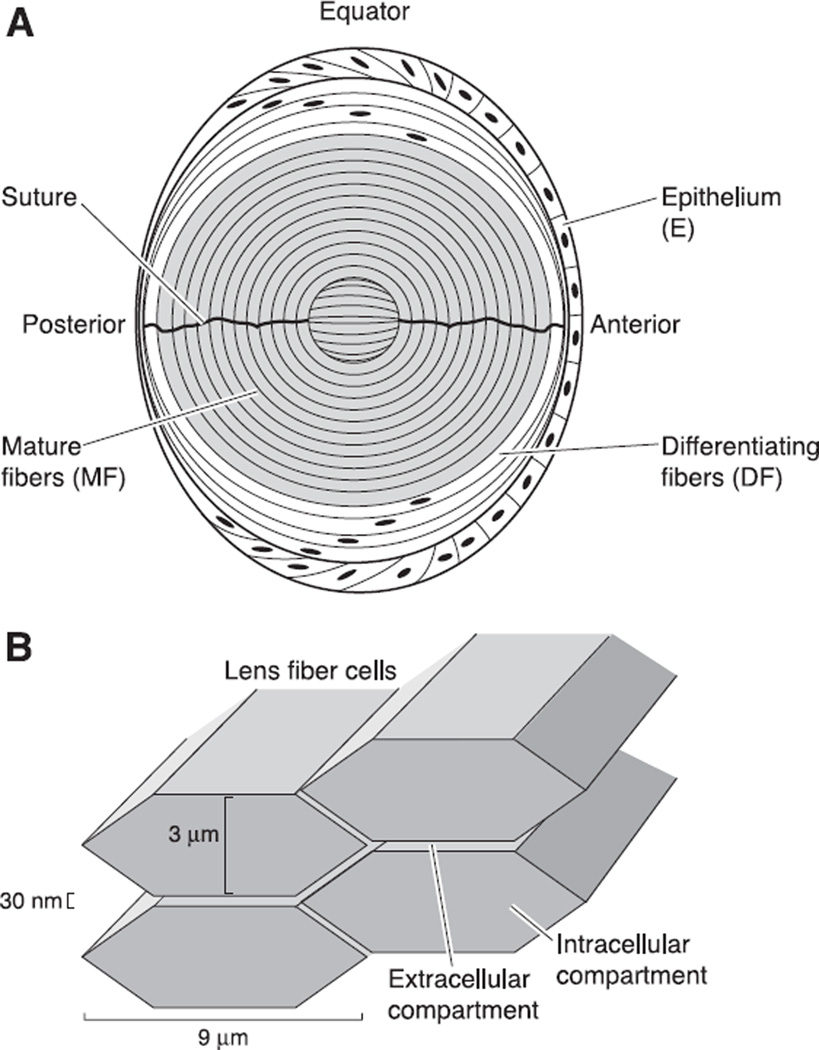Fig. 3.
The structure of the mature lens. A: a sketch of the cellular structure of the lens. As described in the text, the transport properties of lens cells differ in three zones. The epithelium, which caps the front of the lens, expresses most of the active transport proteins in the lens. The mature fibers, which contain no organelles, fill the majority of the volume of the lens. They express membrane transporters for nutrients and antioxidants that are needed for homeostasis. Between the epithelium and mature fibers are the differentiating fibers, which still have organelles, but have different membrane transporters than the epithelium. B: the structure of the intracellular and extracellular compartments within the lens. When cut in cross-section (an equatorial section of the structure shown in A), the lens fibers are flattened hexagons of the approximate dimensions shown. The extracellular and intracellular compartments communicate through transporters in the fiber cell membranes.

